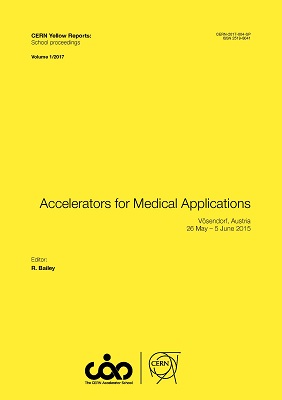Medical Physics Commissioning
DOI:
https://doi.org/10.23730/CYRSP-2017-001.285Keywords:
Proton therapy, pencil beam scanning, commissioning, calibration, medical physics.Abstract
The medical commissioning is an important step to bring a particle gantry into clinical operation for tumour treatments. This involves the parametrization and characterization of all relevant systems including the beam delivery, the patient table, the imaging systems and the connection to all required software components. This article is limited to necessary tasks for the beam delivery system of a pencil beam scanning system. Usually the commissioning starts with the characterization of the unscanned beam and the calibration of the beam energy. The following steps are the parametrization of the scanning system, the commissioning of the beam position monitoring system and characterization of the spot size, all requiring precisions better than 1 mm. The commissioning effort for these tasks depends also on the gantry topology. Finally, the calibrationof the dose measurement system ensures that any dose distribution can be delivered with an absolute precision better than 1%.
Downloads
Published
2017-06-22
Issue
Section
Articles
License
Authors who publish with this publication agree to the following terms:
- CERN retains copyright and publishes the work licensed under the Creative Commons Attribution License 4.0 that allows others to share the work with an acknowledgement of the work's authorship and initial publication in this series.
- Authors are able to enter into separate, additional contractual arrangements for distribution of the published version of the work (e.g., post it to an institutional repository or publish it in a book), with an acknowledgement of its initial publication in this series.
- Authors are permitted and encouraged to post their work online (e.g., in institutional repositories or on their website) prior to and during the submission process, as it can lead to productive exchanges, as well as earlier and greater citation of published work (See The Effect of Open Access).

